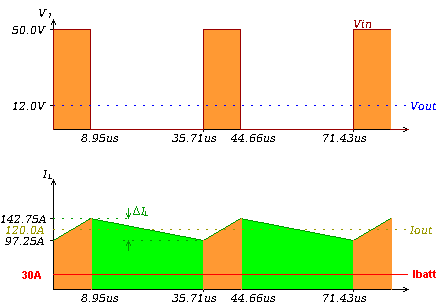macribs
10 MW
- Joined
- Jul 22, 2014
- Messages
- 3,702
I got into a jam today, after riding I let a couple of guys test ride it. All well and good. They got the grin and was all happy.
There was one that was rather tech savvy and he fired questions to me as fast as I could answer. But two I couldn't explain. So I can of goofed it laughed about it and told him to google it. Truth was I was out of my league and didn't know.
Assume that wires are fat, motor is big and strong enough to take all what the controller is delivering lets say a dragstrip.
1: What is the relationship between battery amp and phase amp?
2: To max out a controller that has max phase amp say 350 A or even 600 A, how much battery amp is needed?
I did as best I could and tried to remember what I've read here. So I told the controller will up the battery amp for each cycle of the three phase. So that one phase get as much amp as needed, load low slow turning motor uses less voltage more phase amp and vice versa. Then I said something about a rule of thumb being phase amp are 2.5 - 3.0 times battery amp. Thinking of this now I am not sure what I said made any sense at all
And the second Q I could not answer at all
A little help would go a long way so I will be more enlightened next time around. And not end up standing like stuttering fool.
There was one that was rather tech savvy and he fired questions to me as fast as I could answer. But two I couldn't explain. So I can of goofed it laughed about it and told him to google it. Truth was I was out of my league and didn't know.
Assume that wires are fat, motor is big and strong enough to take all what the controller is delivering lets say a dragstrip.
1: What is the relationship between battery amp and phase amp?
2: To max out a controller that has max phase amp say 350 A or even 600 A, how much battery amp is needed?
I did as best I could and tried to remember what I've read here. So I told the controller will up the battery amp for each cycle of the three phase. So that one phase get as much amp as needed, load low slow turning motor uses less voltage more phase amp and vice versa. Then I said something about a rule of thumb being phase amp are 2.5 - 3.0 times battery amp. Thinking of this now I am not sure what I said made any sense at all
And the second Q I could not answer at all
A little help would go a long way so I will be more enlightened next time around. And not end up standing like stuttering fool.


